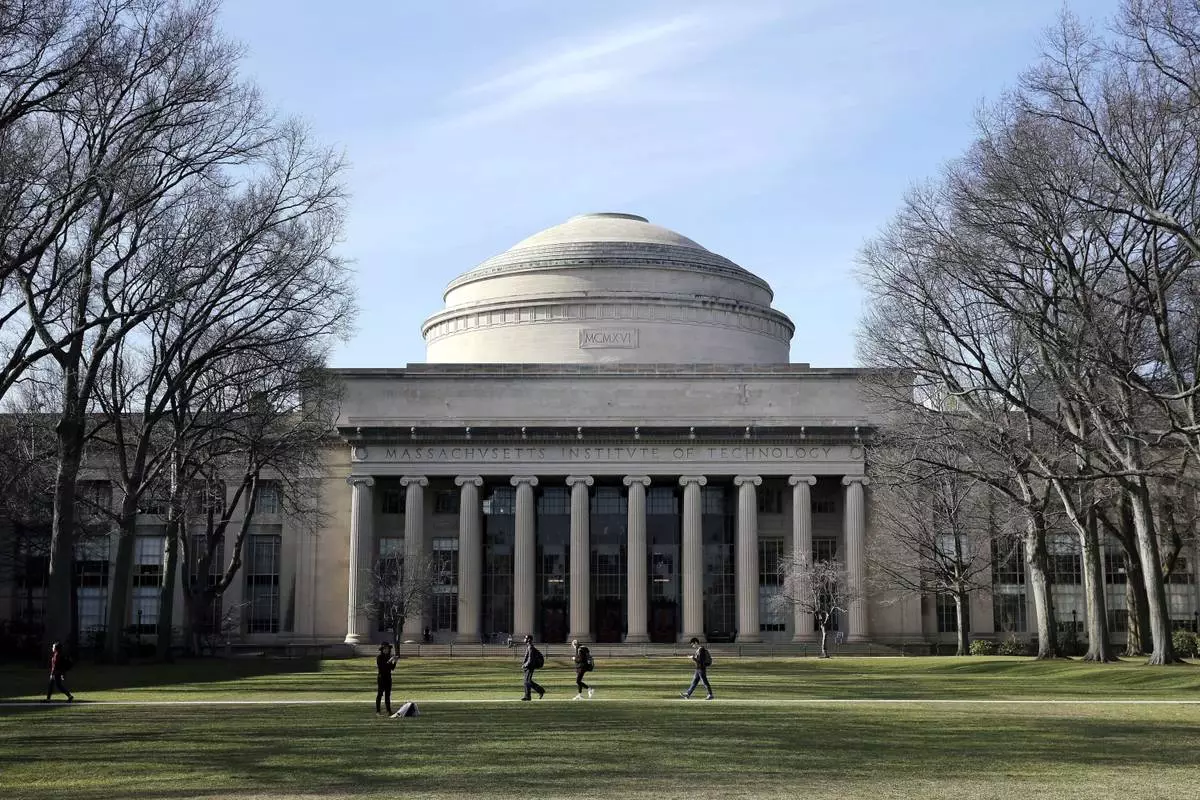SEATTLE (AP) — A man accused of carjacking a beloved 80-year-old Seattle dog walker, running her over and later stabbing her dog to death has been charged with murder and animal cruelty.
Jahmed Kamal Haynes, 48, was charged with first-degree murder, second-degree assault and first-degree animal cruelty, according to a document filed with the court. Prosecutors asked that he be held in the jail without bail and the judge agreed. Haynes is scheduled to be arraigned on Sept. 5.
It was not immediately known if Haynes had a lawyer or would be assigned one by the King County Public Defense office. Officials say they don't believe Haynes knew Dalton.
Ruth Dalton was parked on the side of the road in Seattle's Madison Valley neighborhood at about 10 a.m. Tuesday when Haynes got into the passenger side, prosecutors said. Dalton started to drive away while Haynes tried to take control of the vehicle, they said. He pushed her out and onto the road, backed into several parked cars before driving over her as he fled the scene, prosecutors said.
Several bystanders tried to intervene, one carrying a bat or stick, but Haynes threatened them with a knife, prosecutors said. After he left, the witnesses attempted life-saving measures but Dalton died at the scene.
After leaving the neighborhood, Haynes stabbed Dalton's dog to death in a park, prosecutors said.
“The sheer brutality of the defendant’s actions that morning was only further demonstrated by how he disposed of evidence of his crimes: disposing of Dalton’s dog in a recycling bin and destroying Dalton’s phone,” Senior Deputy Prosecuting Attorney Brent Kling said in his request for a no-bail hold.
Seattle police identified the suspect after someone reported that a man was hurting a dog in the park. Officers responded and found Dalton’s car nearby and were able to get fingerprints from her cellphone, Seattle police Deputy Chief Eric Barden said during a press conference Wednesday.
When police arrested Haynes near his home, he was carrying a knife that had blood on it and the keys to Dalton’s Subaru, Barden said.
Haynes has an extensive and violent criminal history, prosecutors argued when asked that he be held without bail.
He was convicted of vehicular homicide in 1993 for driving recklessly down Seattle streets and on to a sidewalk, crashing into several vehicles and killing a driver. After serving his sentence, he was convicted in 1999 of robbing a Safeway store using a BB gun and vehicle theft, Kling said.
While in prison for those crimes, he attacked two corrections officers in 2003 using a 12-inch (30.5-centimeter) piece of metal that had been sharpened to a dull point, Kling said.
“In short, the level of violence the defendant has shown he is capable of, not only within the day the presently charged crimes were committed, but over the course of the last 30 years demonstrates a propensity for violence that conclusively shows that he is a danger to the community,” Kling said.
The judge agreed.

A visitor places flowers on a memorial for a beloved neighborhood dog walker, Ruth Dalton, 80, near the scene of her murder along Martin Luther King Jr. Way East, Tuesday, Aug. 20, 2024, in Seattle. (Ivy Ceballo/The Seattle Times via AP)

Police investigate the scene where dog walker Ruth Dalton, 80, was reported killed at Brighton Playfield, Tuesday, Aug. 20, 2024, in Seattle. (Ivy Ceballo/ The Seattle Times via AP)

A visitor places flowers on a memorial for a beloved neighborhood dog walker, Ruth Dalton, 80, near the scene of her murder along Martin Luther King Jr. Way East, Tuesday, Aug. 20, 2024, in Seattle. (Ivy Ceballo/ The Seattle Times via AP)
BOSTON (AP) — A study that explores the feasibility of using pigeons to guide missiles and one that looks at the swimming abilities of dead fish were among the winners Thursday of this year’s Ig Nobels, the prize for comical scientific achievement.
Held less than a month before the actual Nobel Prizes are announced, the 34th annual Ig Nobel prize ceremony at the Massachusetts Institute of Technology was organized by the Annals of Improbable Research magazine’s website to make people laugh and think. Winners received a transparent box containing historic items related to Murphy’s Law — the theme of the night — and a nearly worthless Zimbabwean $10 trillion bill. Actual Nobel laureates handed the winners their prizes.
“While some politicians were trying to make sensible things sound crazy, scientists discovered some crazy-sounding things that make a lot of sense,” Marc Abrahams, master of ceremonies and editor of the magazine, said in an e-mail interview.
The ceremony started with Kees Moliker, winner of 2003 Ig Noble for biology, giving out safety instructions. His prize was for a study that documented the existence of homosexual necrophilia in mallard ducks.
“This is the duck,” he said, holding up a duck. “This is the dead one.”
After that, someone came on stage wearing a yellow target on their chest and a plastic face mask. Soon, they were inundated with people in the audience throwing paper airplanes at them.
Then, the awards began — several dry presentations which were interrupted by a girl coming on stage and repeatedly yelling “Please stop. I'm bored.” The awards ceremony was also was broken up by an international song competition inspired by Murphy's Law, including one about coleslaw and another about the legal system.
The winners were honored in 10 categories, including for peace and anatomy. Among them were scientists who showed a vine from Chile imitates the shapes of artificial plants nearby and another study that examined whether the hair on people's heads in the Northern Hemisphere swirled in the same direction as someone's hair in the Southern Hemisphere.
Other winners include a group of scientists who showed that fake medicine that causes side effects can be more effective than fake medicine that doesn't cause side effects and one showing that some mammals are cable of breathing through their anus — winners who came on stage wearing a fish-inspired hats.
Julie Skinner Vargas accepted the peace prize on behalf of her late father B.F. Skinner, who wrote the pigeon-missile study. Skinner Vargas is also the head of the B.F. Skinner Foundation.
“I want to thank you for finally acknowledging his most important contribution,” she said. “Thank you for putting the record straight.”
James Liao, a biology professor at the University of Florida, accepted the physics prize for his study demonstrating and explaining the swimming abilities of a dead trout.
“I discovered that a live fish moved more than a dead fish but not by much,” Liao said, holding up a fake fish. “A dead trout towed behind a stick also flaps its tail to the beat of the current like a live fish surfing on swirling eddies, recapturing the energy in its environment. A dead fish does live fish things.”

Professor James Liao displays a stuffed fish while accepting a prize for physics for demonstrating and explaining the swimming abilities of a dead trout during a performance at the Ig Nobel Prize ceremony at Massachusetts Institute of Technology in Cambridge, Mass., Thursday, Sept. 12, 2024. (AP Photo/Steven Senne)

A team of researchers perform a demonstration during a performance showing that many mammals are capable of breathing through their anus while accepting the 2024 Ig Nobel prize in physiology at the Ig Nobel Prize ceremony at Massachusetts Institute of Technology, in Cambridge, Mass., Thursday, Sept. 12, 2024. (AP Photo/Steven Senne)

People in the audience throw paper airplanes toward the stage during a performance at the Ig Nobel Prize ceremony at Massachusetts Institute of Technology in Cambridge, Mass., Thursday, Sept. 12, 2024. (AP Photo/Steven Senne)

FILE - Students walk past the "Great Dome" atop Building 10 on the Massachusetts Institute of Technology campus in Cambridge, Mass, April 3, 2017. (AP Photo/Charles Krupa, File)
















